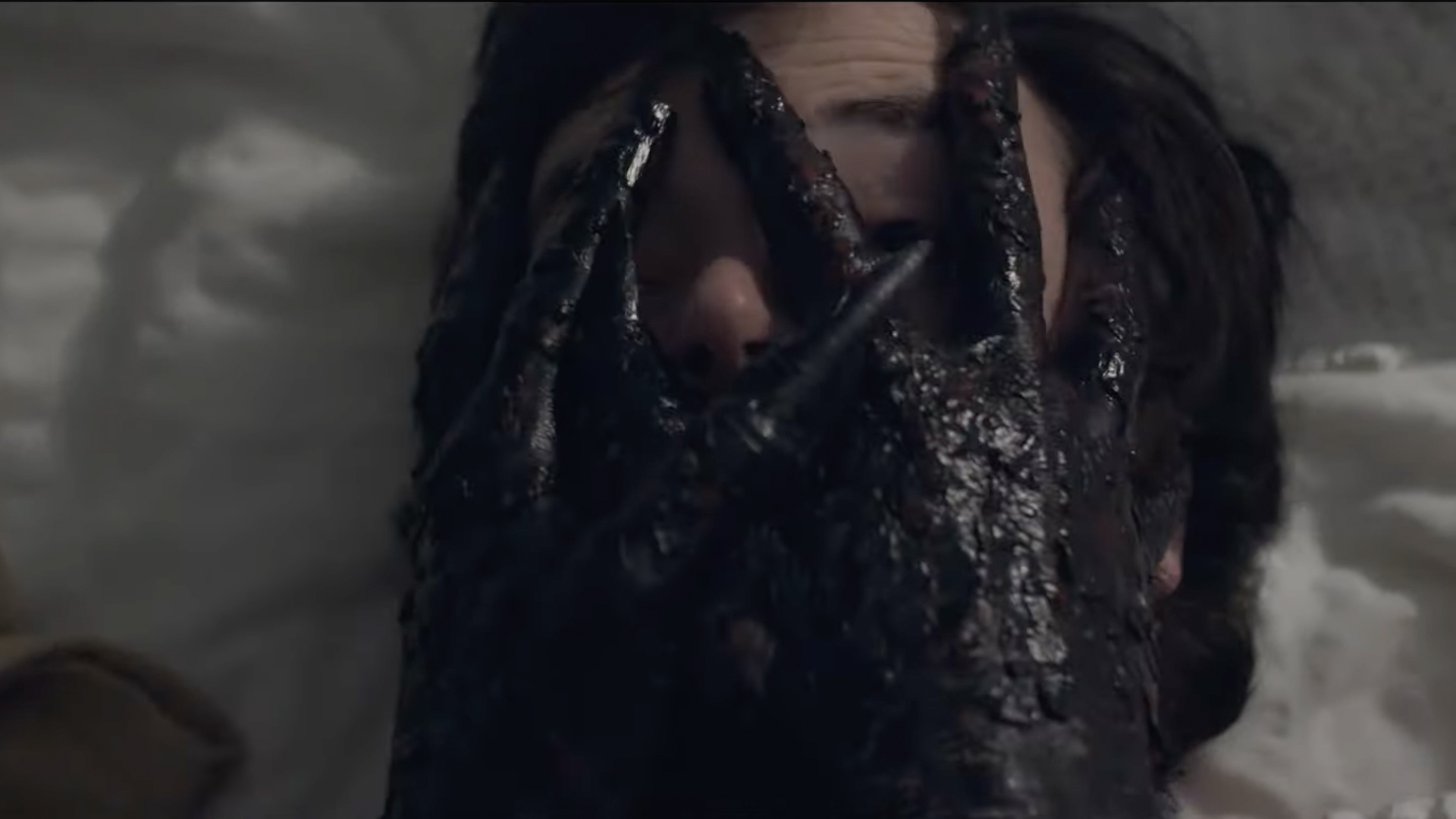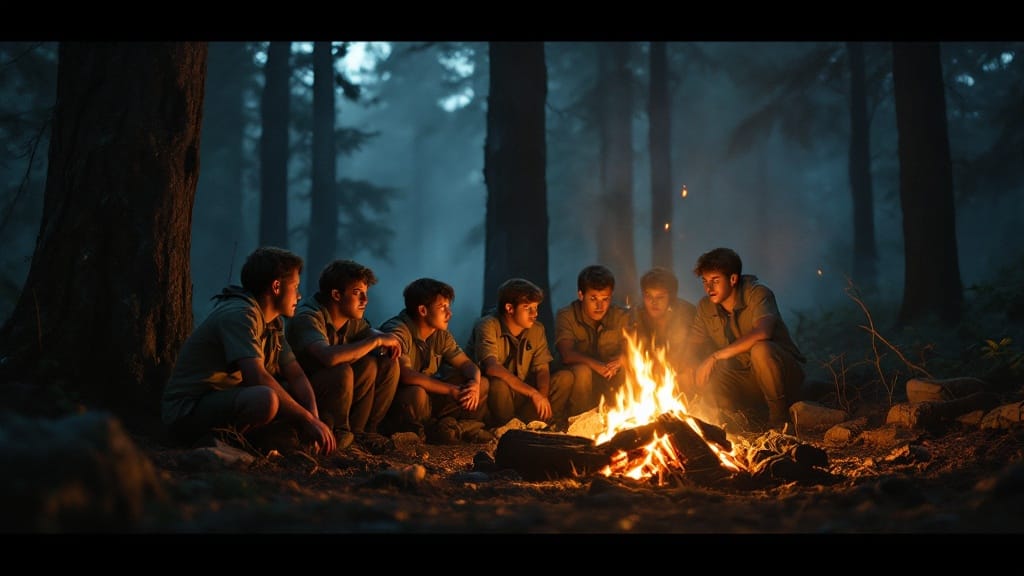Drama
Addict

Directed by Nick Acosta
Nick Acosta’s Addict is an intensely personal psychological horror that blends addiction drama with supernatural horror to explore the destructive spiral of relapse. The film centers on Daniel, a recently sober drug addict, who is drawn back into a harrowing relapse and stalked by a terrifying entity that manifests his inner demons. With this narrative, Acosta invites the audience into the dark and isolating world of addiction, drawing from his own brother’s real-life struggles to add emotional depth to the horror.
At the heart of Addict is the entity—a monstrous, large-armed creature symbolizing the unrelenting grip of addiction. While this metaphor may feel familiar, the film’s creature design is haunting and effective. The creature looms over Daniel, as his battle with sobriety becomes more and more desperate. The stark, white settings, evoking a hospital or sanitized facility, heighten the sense of entrapment that mirrors Daniel’s mental state as he succumbs to his urges.
Technically, the film shines in its sound design and atmosphere. The anxiety-inducing score, coupled with unsettling sound effects, makes the viewer feel as if they’re caught in Daniel’s frantic mind, experiencing the suffocating tension and fear right alongside him. The editing effectively mirrors Daniel’s escalating torment, with abrupt cuts and uncomfortable pacing that contribute to a growing sense of dread. However, some may find fault in the film’s slow pacing, as scenes can feel drawn out and repetitive, repeating the same narrative beats without diving deeper into Daniel’s personal history or emotional arc.
While Addict excels in its visuals and sound, it falters somewhat in character development and narrative depth. The supporting characters, though integral to Daniel’s journey, lack the complexity that might have helped ground the story’s emotional core. The film occasionally leans on familiar tropes about addiction, which might feel underdeveloped in contrast to the more striking horror elements.
Acosta’s directing style, with its unsettling camerawork and psychological undertones, is a clear highlight. The decision to leave the story open-ended allows the audience to interpret Daniel’s fate in their own way, further cementing the film’s status as a psychological thriller rather than a straightforward horror movie.
Addict is a passion project, and Acosta’s personal connection to the story adds weight to the film’s emotional landscape. While it doesn’t always break new ground in its portrayal of addiction, it compensates with powerful visuals, a disturbing creature design, and a relentless atmosphere that lingers long after the credits roll. The film is not just a horror piece but an allegory for the relentless and cyclical nature of addiction—a fitting tribute to the struggle that inspired it.
Addict is a well-crafted psychological horror that will resonate with fans of the genre, particularly those drawn to films that tackle real-world issues through the lens of the supernatural. Though its pacing and character depth may not hit all the right notes, its atmosphere, sound design, and emotional core make it a gripping exploration of addiction’s dark hold.
Comedy
Troop 458

WARNING! This review contains SPOILERS!
Troop 458, written by Trevor Allen, captures the often daunting, yet transformative, experience of being the new kid in a world full of unknowns. We follow Sidney, an anxious boy thrown into his first Boy Scouts campout, where he faces both the perils of acceptance and the strangeness of his eccentric scout leader. As spooky campfire tales start to weave into reality, Sidney is forced to confront his fears head-on, finding moments of humor, adventure, and unexpected camaraderie along the way.
I like the concept of Troop 458 because it blends coming-of-age themes with a playful sense of adventure, all wrapped in an atmosphere tinged with just the right amount of mystery. Allen’s writing brings to life a cast of memorable characters, especially through Sidney’s journey of growth. The tension between humor and fear feels authentic to the Boy Scouts’ setting, and it captures the real challenges kids face when trying to fit in.
What resonated with me most was the screenplay’s exploration of courage—not just in facing mythical dangers but in embracing who you are, quirks and all. Some aspects could benefit from a clearer focus on character motivations and tighter pacing to keep the momentum strong, particularly during scenes that blur the line between myth and reality.
The dialogue is great in many places, offering humor that feels natural for a group of young scouts. There were moments where I felt the conversations could be a bit sharper or more distinct to heighten the comedic or emotional impact. Character development is a strong suit, with Sidney’s evolution being both relatable and satisfying, but secondary characters could have a bit more depth to elevate the ensemble.
Allen’s Troop 458 is polished, with solid grammar, spelling, and formatting that adhere to professional standards. The structure is clean and makes for an easy read, setting up scenes that are visually compelling.
Troop 458 delivers an enjoyable mix of humor, heart, and a touch of the supernatural, leaving me eager to see how it might come to life on screen.
Drama
Ellie

WARNING! This review contains SPOILERS!
Directed by Marcus Mejia
Ellie is a refreshing experience that pulled me right into the world of a young, shy man navigating a work meeting while secretly yearning for a bit of magic in his everyday life. We’re taken through his imaginative, musical daydream—a beautiful escape from reality that reveals his true desires. I loved how the film peeled back layers of his personality without a single word of dialogue. Instead, the music carried the narrative, and surprisingly, it worked so well.
Marcus Mejia did an excellent job blending dramedy elements to keep the film engaging. The moments of humor and more emotional beats make the film feel well-rounded. Mejia’s choice to swap dialogue for music was a bold move, and it paid off. I could feel the character’s internal struggles and hopes as the music brought out emotions words couldn’t.
The lighting felt intimate, almost like it was giving us a window into the protagonist’s soul, and the cinematography perfectly captured the whimsical tone of his daydreams. I noticed how smoothly the editing transitioned between reality and fantasy, which made the story’s pacing feel just right. The sound design was on point, with every beat of music syncing beautifully with the character’s emotional highs and lows.
I loved when the protagonist’s daydream overlapped with reality, creating this seamless blend that felt so relatable. I admired how it portrayed the quiet, unspoken dreams we all carry. It was a reminder of the power of our inner worlds and how much magic lies just beneath the surface of our everyday lives.
Ellie left a gentle yet lasting impression. It’s a unique, heartfelt short film that shows how creative risks can pay off. Ellie is a memorable journey that’s definitely worth the watch.
Drama
Finding Acceptance

Directed by Andrew DeBennett
WARNING! This review contains spoilers.
Watching “Finding Acceptance” was an experience that brought me back to those anti-bullying films we’d see in school assemblies. The story follows Mary, a new student in a wheelchair, navigating the often-tough world of school friendships. Initially, she faces teasing from her peers but finds a genuine friend in Liz, who even manages to extend kindness to Mary’s bully, Max. The message is straightforward and clear: acceptance and empathy matter.
I could see what the director was aiming for—Andrew DeBennett notes that the film was both a joy to create and a personal project. The heart of the story shines through, with Kaylah Pollock (Mary) and Laney Hansen (Liz) bringing warmth to their roles. Their connection feels genuine, even if the overall story feels a bit too familiar.
Technically, the film could have used some fine-tuning. The sound mix was rough, with the music often drowning out dialogue. The editing also felt choppy, making it harder to stay immersed in the story. The dialogue leaned into clichés—phrases like “loser” felt outdated and took away from the realism. The cinematography, however, was a bright spot, creating a warm, inviting feel that suited the film’s positive message.
I felt like the story could’ve benefited from more depth. The bullying that Mary faces is minimal, making her eventual friendships feel somewhat predictable. For younger audiences, this simplicity might be engaging and easy to digest, but it misses the chance to delve into the more complex aspects of acceptance.
In the end, “Finding Acceptance” delivers a positive, albeit simple, message. While it didn’t connect with me on a deeper level, I can see it being a useful film for educational settings, especially for younger viewers learning about kindness and friendship.












